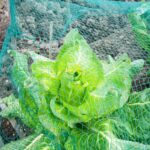Are you looking to bring the beauty and bounty of a vegetable garden to your own backyard? Home vegetable gardens are a great way to enjoy fresh, nutritious produce right at home.
In this article, we’ll explore the benefits and basics of starting your own home vegetable garden, from selecting the right location to harvesting and enjoying the fruits of your labor. Whether you’re new to gardening or have been growing vegetables for years, there’s something here for everyone interested in creating their own little piece of agricultural paradise.
When it comes to home vegetable gardens, one of the first steps is choosing the right location. This includes considering factors such as sunlight, soil quality, and available space.
We’ll delve into these important considerations in order to help you set yourself up for success from the very beginning. Additionally, we’ll discuss essential tools and equipment needed for starting a home vegetable garden, as well as tips for selecting the perfect vegetables to grow based on your preferences and growing conditions.
Planting and maintaining a home vegetable garden requires time, effort, and dedication. We’ll provide expert tips for successful planting and maintenance to help ensure a bountiful harvest. And because no garden is immune to pests and diseases, we’ll also cover natural and organic solutions for dealing with common issues that may arise during the growing season.
Lastly, we’ll discuss how you can share the joy and benefits of home vegetable gardens with others in your community – from inspiring friends and family to starting community initiatives that promote sustainable living through gardening. Whether you’re looking to add some fresh produce to your table or inspire others in your community, a home vegetable garden is a rewarding venture that offers both personal satisfaction and shared joy with others around you.
Selecting the Right Location for Your Home Vegetable Garden
When it comes to starting a home vegetable garden, one of the most crucial decisions you will make is selecting the right location. The success of your garden depends greatly on the amount of sunlight, quality of soil, and available space. Sunlight is essential for the growth of plants as they need it for photosynthesis. Therefore, it is important to choose a location that receives at least 6-8 hours of direct sunlight per day.
Next, consider the soil in your chosen location. It should be well-draining to prevent waterlogging which can lead to root rot in plants. Conduct a simple soil test to check its pH level and nutrient content. If needed, you can amend the soil with organic matter such as compost or manure to improve its quality.
Finally, take into account the available space for your home vegetable garden. Make sure that there is enough room for your chosen vegetable varieties to spread out and grow. Consider vertical gardening if you have limited space by using trellises or cages for vining plants like tomatoes and cucumbers.
Essential Tools and Equipment for Starting a Home Vegetable Garden
When starting a home vegetable garden, it’s important to have the right tools and equipment on hand to ensure a successful and enjoyable experience. From preparing the soil to maintaining your plants, having the essential items can make all the difference in your gardening journey.
Basic Hand Tools
One of the first things you’ll need for your home vegetable garden is a set of basic hand tools. This includes a trowel for digging small holes and transplanting seedlings, a hand fork for weeding and loosening soil, and a pair of pruning shears for trimming and harvesting. Investing in high-quality, durable tools will make your gardening tasks easier and more efficient.
Watering Equipment
Proper watering is crucial for the health of your home vegetable garden, so having the right watering equipment is essential. A watering can with a fine rose attachment is ideal for gently hydrating seedlings and young plants without causing damage. In addition, consider investing in a soaker hose or drip irrigation system to ensure consistent moisture levels throughout your garden beds.
Protective Gear
When working in your home vegetable garden, it’s important to protect yourself from potential hazards such as thorns, sharp objects, and harmful chemicals. Be sure to have a pair of sturdy gardening gloves to shield your hands from dirt, moisture, and potential injuries. Additionally, wearing a wide-brimmed hat can provide protection from the sun while working outdoors.
By equipping yourself with these essential tools and equipment, you’ll be well-prepared to start and maintain a thriving home vegetable garden. Whether you’re planting tomatoes or zucchinis, having the right gear at your disposal will set you up for success in cultivating fresh produce right in your backyard.
Choosing the Perfect Vegetables for Your Home Garden
When it comes to selecting the perfect vegetables for your home garden, there are a wide variety of options to choose from. Whether you are a seasoned gardener or just starting out, it’s important to consider your climate, available space, and personal preferences when deciding which vegetables to grow. Here are some popular choices to consider for your home vegetable garden:
- Tomatoes: One of the most popular choices for home gardeners, tomatoes come in a variety of sizes, shapes, and colors. They can be grown in containers or directly in the ground, making them a versatile option for any garden.
- Zucchinis: These fast-growing squash plants are perfect for beginner gardeners and can produce an abundance of delicious vegetables throughout the growing season.
- Carrots: Another great option for beginner gardeners, carrots thrive in well-drained soil and can be planted in early spring for a summer harvest.
In addition to these popular options, there are many other vegetables that can thrive in home gardens, including lettuce, peppers, cucumbers, and beans. When selecting vegetables for your garden, it’s important to consider your local climate and growing conditions.
Some vegetables may require full sunlight, while others can thrive in partial shade. It’s also important to consider the space you have available – some vegetables, such as vining plants like cucumbers and beans, may require trellises or other support structures.
Ultimately, the perfect vegetables for your home garden will depend on your personal preferences and gardening goals. By carefully selecting the right mix of vegetables that match your growing conditions and tastes, you can create a bountiful and enjoyable home vegetable garden that will provide fresh produce throughout the growing season. Whether you choose traditional favorites or unique varieties, cultivating a diverse selection of vegetables is an exciting and rewarding adventure for any gardener.
Planting and Maintaining Your Home Vegetable Garden
Now that you have selected the right location, gathered your essential tools and equipment, and chosen the perfect vegetables for your home garden, it’s time to start planting and maintaining your vegetable garden. Here are some tips for success:
1. Proper Plant Spacing: Make sure to follow the spacing guidelines for each type of vegetable you are planting. Crowding can lead to competition for nutrients and sunlight, which can result in stunted growth and smaller yields.
2. Watering Routine: Establish a regular watering routine for your home vegetable garden, ensuring that the soil stays consistently moist but not waterlogged. Using a soaker hose or drip irrigation system can make this task more efficient.
3. Mulching: Mulching around your plants can help conserve moisture, suppress weeds, and regulate soil temperature. Organic mulches such as straw or shredded leaves also provide nutrients to the soil as they decompose.
4. Fertilizing: Depending on the type of vegetables you are growing, you may need to apply fertilizer throughout the growing season. Consider using organic fertilizers, such as compost or manure, to promote healthy plant growth without harsh chemicals.
5. Pruning and Trellising: Certain vegetables like tomatoes and cucumbers benefit from pruning and trellising to promote better air circulation, reduce disease risk, and maximize space in your home vegetable garden.
By following these tips for planting and maintaining your home vegetable garden, you can set yourself up for a successful growing season with bountiful harvests of fresh produce right from your own backyard. Happy gardening.
Dealing With Common Pests and Diseases in Home Vegetable Gardens
Maintaining a home vegetable garden can be immensely rewarding, but it also comes with its own set of challenges. One of the most common obstacles for home gardeners is dealing with pests and diseases that can damage or even destroy their precious crops. However, there are natural and organic solutions that can help protect your plants without the need for harmful chemicals.
One effective way to prevent pests and diseases in your home vegetable garden is to practice good garden hygiene. This includes regularly removing weeds, fallen leaves, and other plant debris that can harbor pests and diseases. Additionally, proper spacing between plants can improve air circulation and reduce the risk of fungal infections.
Another natural solution for pest control in home vegetable gardens is to introduce beneficial insects that feed on harmful pests, such as ladybugs for aphids or praying mantises for caterpillars. These predatory insects can help keep pest populations in check without the need for chemical pesticides.
| Beneficial Insects | Pest Controlled |
|---|---|
| Ladybugs | Aphids |
| Praying Mantises | Caterpillars |
Harvesting and Enjoying the Fruits of Your Labor
After months of hard work in your home vegetable garden, it’s finally time to harvest the fruits of your labor and enjoy the delicious, fresh produce you’ve grown. Harvesting and enjoying the bounty from your garden is a rewarding experience that allows you to savor the flavors of your home-grown vegetables and share them with friends and family.
When to Harvest
One of the keys to enjoying a successful harvest from your home vegetable garden is knowing when to pick your vegetables. Each type of vegetable has its own optimal harvesting time, so it’s important to pay attention to the specific guidelines for each plant. For example, tomatoes should be picked when they are fully colored but still firm, while zucchinis are best harvested while they are still young and tender.
Preparing Your Harvest
Once you’ve gathered your fresh vegetables from the garden, it’s time to prepare them for consumption. This may involve washing them thoroughly and removing any dirt or debris. Some vegetables may also require trimming or cutting before they can be used in recipes. It’s important to handle your harvest with care to ensure that it stays as fresh and delicious as possible.
Enjoying Your Home-Grown Vegetables
The best part about harvesting from your home vegetable garden is enjoying the delicious flavors of your freshly picked produce. Whether you incorporate them into meals right away or store them for later use, there’s nothing quite like savoring the taste of vegetables that you have grown with your own hands. Sharing your harvest with friends and family is also a great way to spread the joy and benefits of home vegetable gardens within your community.
Inspiring Others
In conclusion, home vegetable gardens offer a multitude of benefits to individuals and communities. Not only do they provide a source of fresh, nutritious produce, but they also promote sustainable living and environmental stewardship. By sharing the joy and benefits of home vegetable gardens in your community, you can inspire others to embrace this rewarding pastime and contribute to the overall well-being of your neighborhood.
One way to inspire others is by hosting workshops or classes on home vegetable gardening. These events can provide valuable knowledge and resources for beginners, as well as an opportunity for experienced gardeners to share their expertise. Additionally, forming community gardening groups or clubs can create a sense of camaraderie and support among fellow enthusiasts, fostering a greater interest in home vegetable gardens within the neighborhood.
Furthermore, sharing surplus harvest with neighbors or local food banks not only reduces waste but also strengthens community bonds. By demonstrating the abundance that home vegetable gardens can yield, you can showcase the potential for self-sufficiency and the importance of sustainable food practices. Ultimately, by inspiring others to join in the love for home vegetable gardens, we can collectively contribute to healthier, more connected communities.
Frequently Asked Questions
What Is the Best Vegetable Garden for Beginners?
The best vegetable garden for beginners is typically one that includes easy-to-grow vegetables like tomatoes, lettuce, carrots, and radishes. These vegetables are low-maintenance and can thrive in different climates and conditions.
What Vegetables Are Best to Grow at Home?
Some of the best vegetables to grow at home include tomatoes, peppers, cucumbers, zucchini, and lettuce. These vegetables are popular choices for home gardens because they are relatively easy to grow and can produce a sizable harvest.
What Is a Good Layout for a Vegetable Garden?
A good layout for a vegetable garden involves organizing the plants in such a way that takes into account their size, sun exposure needs, and water requirements. Consider planting taller plants at the back of the garden to avoid shading smaller ones, and group together plants with similar watering needs for more efficient irrigation.

If you’re looking to get into vegetable gardening, or are just looking for some tips on how to make your current garden better, then you’ve come to the right place! My name is Ethel and I have been gardening for years. In this blog, I’m going to share with you some of my best tips on how to create a successful vegetable garden.





